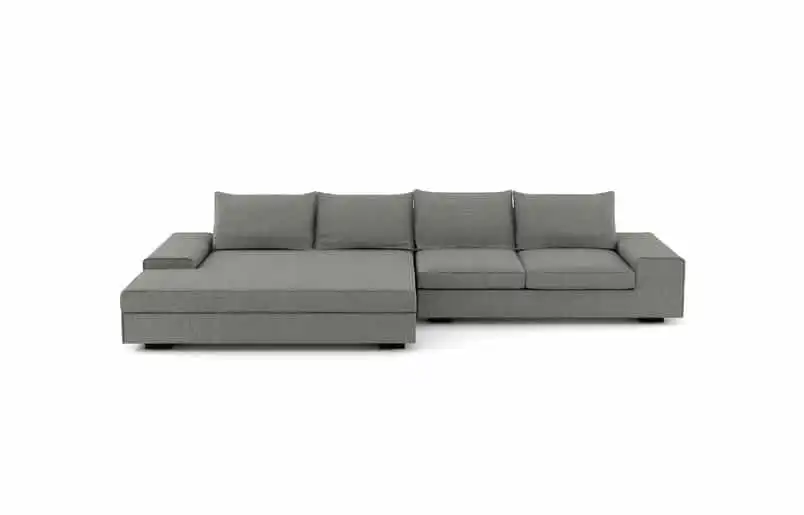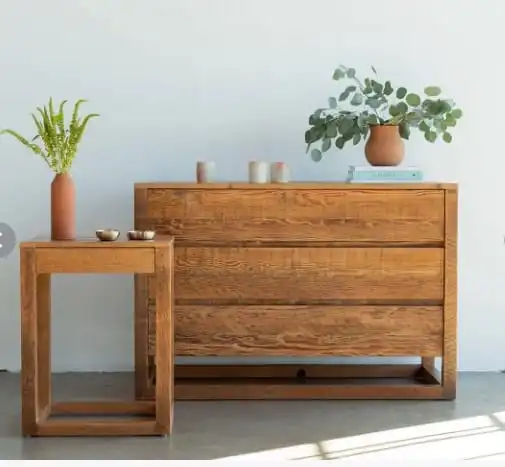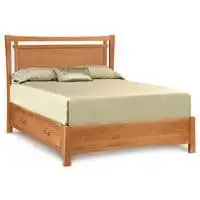How Long Does New Furniture Off Gas?
Have you recently bought new furniture, e.g., a bed frame, shelving unit, desk, or couch? Perhaps you don’t know why you’re feeling tired, crabby, foggy, or lightheaded? Your new furniture might cause such symptoms from the toxic fumes that certain furniture off-gasses.
Typically, furniture is made from different types of materials that may contain dangerous chemicals found in glues, adhesives and wood stains. Such chemicals may escape into your home's air and affect your indoor air quality. You can find most of these chemicals on the EPA’s Hazardous Air Pollutants database.
In this article, we'll explain what is off gassing, how long new furniture off-gasses and what to do to reduce the health effects of the toxic chemicals released non only by furniture, but also other household products.
So What Is Furniture Off-Gassing?
The process called off-gassing takes place when certain volatile organic compounds used in the production of numerous household items are emitted into the air that you actually breathe. Everything off-gasses in one way or another– if there is a smell, then it is off-gassing.
Although you’ll learn more about what VOCs are as you read on, you should note that the process of off-gassing is a common thing in new household products for two primary reasons.
Firstly, the process starts when the new item gets exposed to the air, and, secondly, the use of VOCs is very common in many newly manufactured products.
Furthermore, off-gassing does not stop once the smell stops. Although the 'new smell' might disappear after one week or so, the fumes are still released. Off-gassing may last between six months to five years based on the household product and the chemicals applied to treat it.
Furniture Off-Gassing and Indoor Air Quality
There’s a family of chemicals known as volatile organic compounds (VOCs) and a different family of chemicals known as semi-volatile organic compounds (SVOCs). VOCs and SVOCs are mostly found in cushions, furniture, and carpets.
You can also find these chemicals on the HAPs list. All of these chemicals affect your indoor air quality, making the air potentially unhealthy to breathe. So, what exactly are these materials?
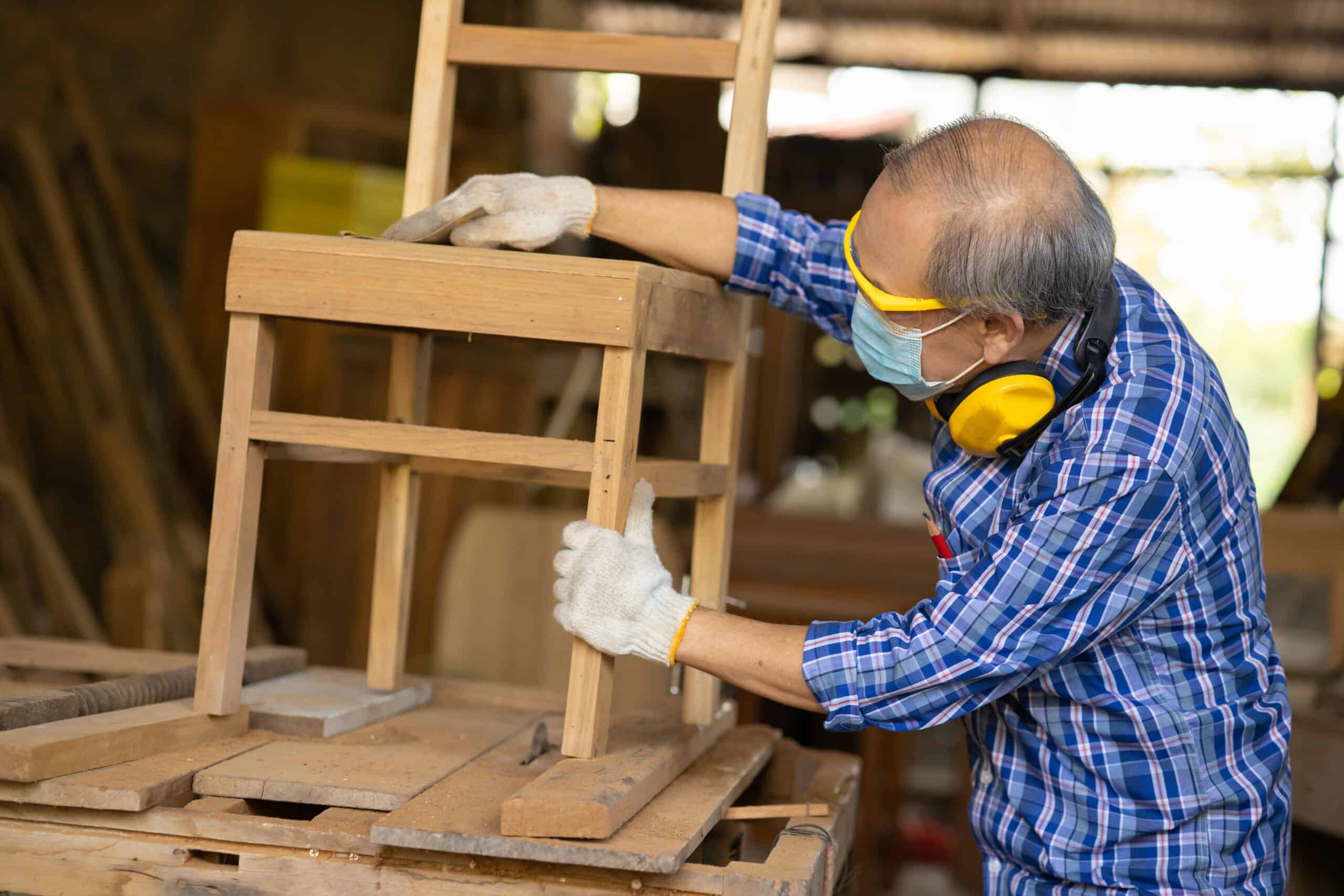
How Long Will New Furniture Off-Gas?
It depends: that’s the short answer. Two larger groups of chemicals are commonly known for off-gassing:
What Are the Potential Health Risks from The Furniture Off-Gassing?
When products like furniture off-gas, certain chemicals are released into the air. We then inhale, ingest, and absorb these toxic substances at home. Health risks from prolonged exposure to VOCs and SVOCs can either be short-term and/or long-term. Some examples are listed below:
VOCs (Volatile Organic Compounds)
· Headache
· Irritation of eyes, throat, and nose
· Dizziness
· Nausea and vomiting
· Cancer
· Increased asthma
· Damage to the central nervous system
· Kidney and liver damage
SVOCs (Semi-Volatile Organic Compounds)
· Retarded reproductive development
· Allergic reactions
· Asthma
· Diabetes
· Cancer
· Infertility
· Hormone disruption
· Attention deficit disorder
How to Speed Up Furniture Off-Gassing?
There are various ways you can accelerate the off-gassing process. However, first, we would like to discuss the safest way of doing this.
Off-gassing is risky to human health since it means concentrating fumes dangerous to human health in an enclosed space. A small quantity of the substances in question — VOCs — is not that bad. If you breathe in a lot, however, it can cause problems.
The trick to speeding off-gassing is to perform it in a well-ventilated space. Outdoors is perfect. Otherwise, choose a spot with much open space. For instance, a room with open windows and high ceilings will be quite effective. You may also install a fan to maintain constant airflow.
After you’ve chosen your space, ensure there’s maximum airflow throughout your furniture and take off all of its coverings. Coverings can catch chemicals emitted during the off-gassing procedure.
Leave it there for at least a day. If possible, 2-3 days would be perfect. Although it may not eliminate the off-gassing, it can reduce it significantly and perhaps even to the point whereby it poses no risk to your family. It will eliminate the chemical smell linked to off-gassing.
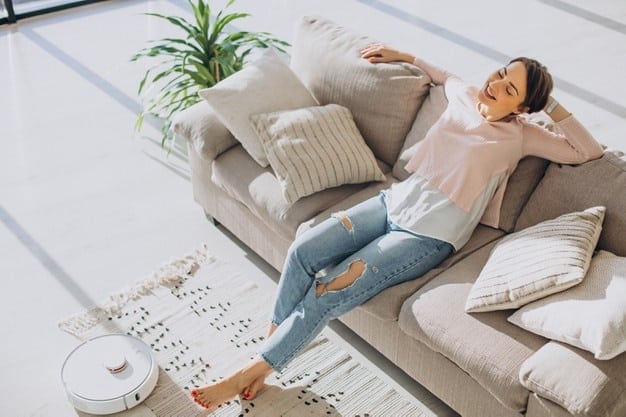
What Should You Do with New Furniture That Off-Gasses?
Buying Non-Toxic Furniture
Many furniture brands are choosing to offer non toxic furniture to eco-consious and health conscious consumers. Their products are made from responsibly sourced solid wood with zero-VOC finishes and no toxic adhesives.
Some of these brands are Greenguard GOLD certified, which guarantees they won't release any harmful gases, others use GOTS certified materials and more. Take a look at our picks:
Materials: Solid Wood (Walnut or Maple), Bamboo, Natural Latex, Wool, Certi-Pur Certified Foam
Wood Finishes: Natural Beeswax
Warranty: Lifetime
Medley Home is a digital furniture store that deals with zero VOC furniture typically made from natural and sustainable materials, mostly solid wood. Their natural wod finishes include beeswax, olive oil, and carnauba wax that contain no harmful chemicals.
Their upholstered furniture and sofas are made with no dangerous flame retardants or other toxic substances. Their fabrics are also completely natural, e.g., hemp, wool, and certified organic cotton.
Medley Home furnishings are well-designed using traditional methods and several new modern tools and touch to complete them. The quality is still a priority and so does their commitment to reducing their carbon footprint as they make great pieces. They usually shape their work to your specific needs, tastes, and preferences. You may bypass mass-produced items and instead select a piece that is as unique as you are.
Material: Reclaimed Douglas Fir Solid Wood
Finish: Zero-VOC sealant
Warranty: 10 Years
Avocado Green is a Los Angeles-based organic mattress and bedding manufacturer. They have recently introduced an attractive collection of reclaimed wood bedroom furniture. Their furniture pieces are always eco-friendly and include non-toxic bed frames and dressers with zero-VOC finish.
Apart from being an eco-friendly practice, using reclaimed wood also makes all pieces of furniture distinct with their texture and imperfections.
Being old is a perk that comes with this wood. Old, mature wood has generally had time to become harder and highly durable. New lumber, or younger wood, warps and bends a lot easier. And this is not what you’re looking for in your furniture.
Since Avocado participates in the Sustainable Furnishings Council, you can have your new organic furniture with peace of mind knowing that you’re contributing to a much healthier, environmentally-friendly lifestyle. You can combine an organic mattress with Avocado non-toxic bed frames to have a chemical-free bedroom.
Copeland furniture typically makes nontoxic hardwood furniture (Greenguard certified) for your healthy household. This company based in Vermont has been specializing in furniture since the 1970s.
When it comes to their designs, you can get traditional and contemporary furniture pieces built from natural wood and usually finished with zero-VOC wood stain.
Copeland’s non-toxic furniture collections, with zero flame retardants, include dining and living room furniture, bedroom furniture, and home office furniture.
They’ve discovered an incredible balance between old methods and craftsmanship, and organic contemporary furniture. They also work with the Forest Stewardship Council and Rainforest Alliance’s SmartWood program to have sustainably sourced wood.
Since Copeland dedicate themselves to being environmentally friendly, they cut down waste and fossil-fuel usage (they find nearby wood sources rather than having to move it over long distances). They utilize wood waste from production to heat their factory and ultimately lower their use of imported oil.
What Other Home Products Off-Gas?
VOCs and other chemicals off gas from a wide range of home products, causing indoor air pollution and unpleasant symptoms, especially in people with chemical sensitivities. Consider this list of the worst offenders:
Conclusion
Have you recently bought new furniture and are noticing symptoms? You can either let the furniture off-gas longer or simply return it to the store. If you’re preparing to purchase furniture, try buying pieces built with natural materials. Check out the material, coloring, and finishes applied for the formation of the frame, cushion or padding, and covering.
You should also unpack furniture outdoors to allow gases trapped in that packaging to be released out of your house.
Once inside, fill your home with fresh air to enable gases to dissipate to the outdoors. Operating an air purifier may also help lower the number of airborne gases from your new furniture's off-gassing.
Thanks to advanced research and planning, off-gassing from toxic chemicals in new furniture can be reduced along with health effects.

